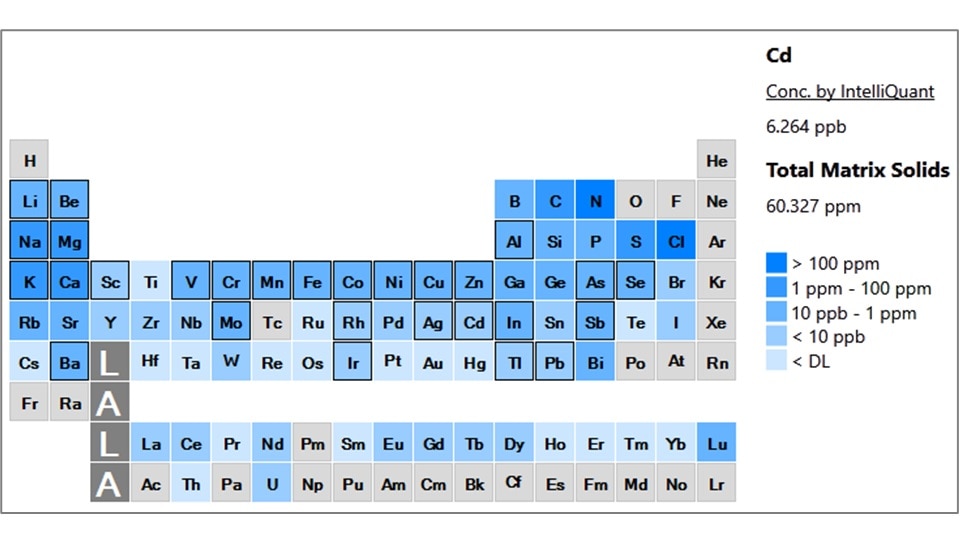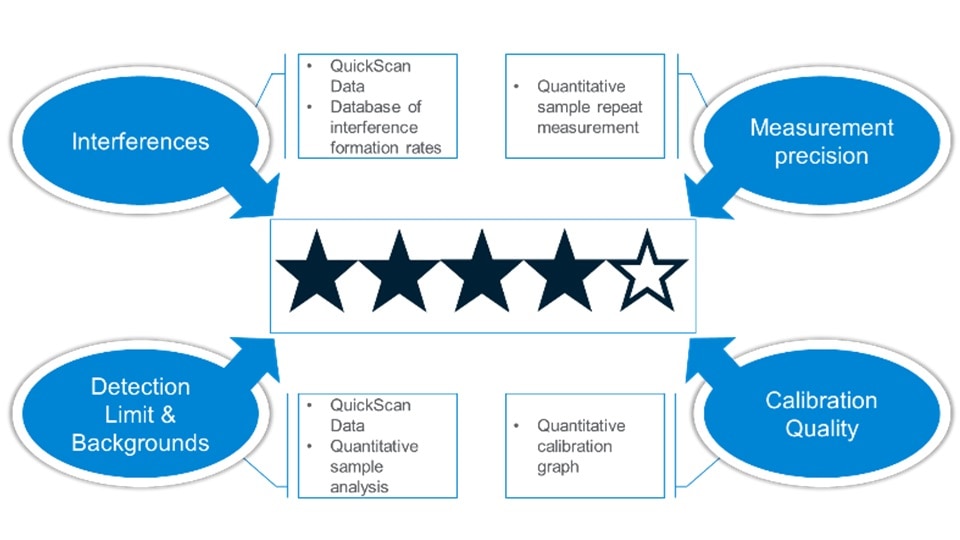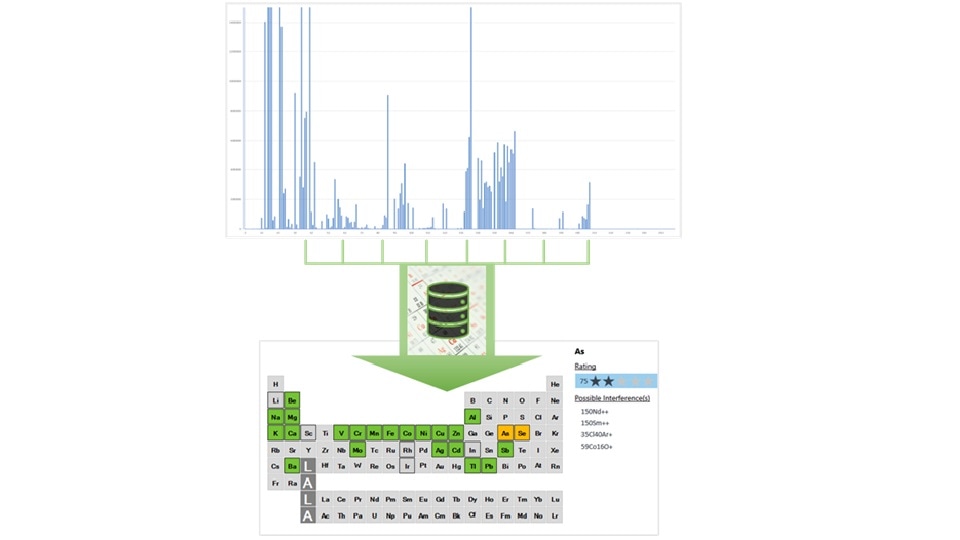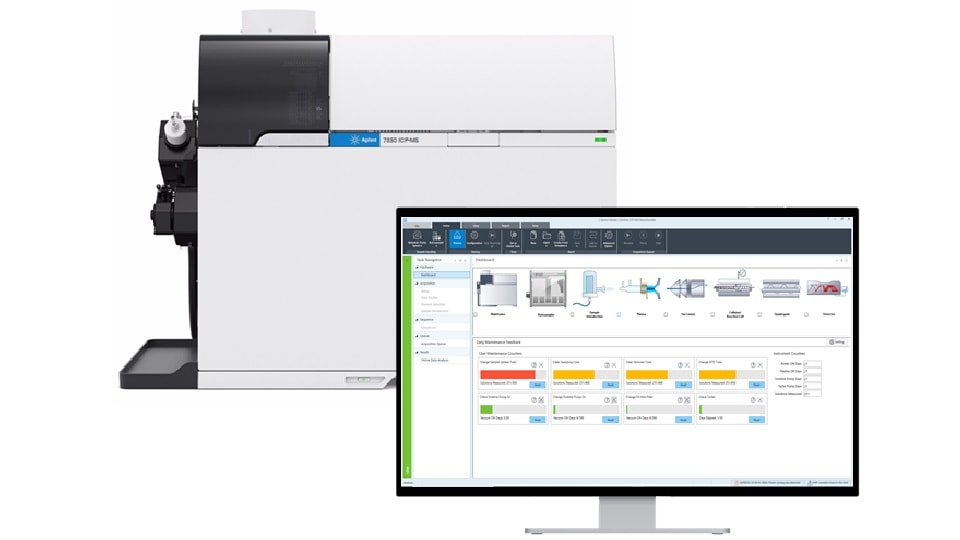First introduced in Agilent ICP-MS MassHunter version 4.6, IntelliQuant for ICP-MS provides an automated semiquantitative analysis for every sample.
IntelliQuant uses the optional two-second QuickScan taken with every sample. QuickScan acquires a complete mass spectrum of the entire measurable mass range, facilitating semiquantitative and Total Matrix Solids (TMS) calculations of every sample.
Similar to Total Dissolved Solids (TDS), TMS is the sum of the key matrix elements in each sample and is useful when troubleshooting an unexpectedly high matrix sample (e.g. if a sample induces an internal standard suppression).
Elements that are typically considered to contribute to matrix effects, such as ionization suppression and matrix deposition on interface cones and lenses are included in the TMS calculation. Gas elements, including elements in acids such as HCl and HNO3, do not cause appreciable matrix effects in ICP-MS, so they are excluded from the calculation.
IntelliQuant displays the data as an intuitive periodic table “heatmap” and clicking an element shows the analysis in greater detail (Figure 1). The data is also displayed in a numerical table, available for reporting or export to a spreadsheet etc.

IntelliQuant with Star Rating for easy data assessment
IntelliQuant was further enhanced with the introduction of the Star Rating function in ICP-MS MassHunter 5.3, as summarized in Figure 2. A single button press displays the star rating summary view.
The Star Rating evaluates each quantitative element result for data quality based on several factors:
- Spectral interferences
- Measurement precision
- Detection limits and backgrounds
- Calibration quality

ICP-MS interference database
A database of possible interferences was created specifically for IntelliQuant and the Star Rating (Figure 3). This database uses experimentally derived formation rates for the different preset plasma modes (Low Matrix, General Purpose, and UHMI) in both helium collision and no gas cell modes. The intensity of the interference depends upon the sample matrix elements, plasma operating mode as well as the cell mode used. As the database is already “calibrated” for the different options, no user input is needed, e.g., telling the software which plasma or cell mode was used.

Simplifying ICP-MS data review
The sample batch data is presented using the star rating summary view. Samples identified as having a low star rating are flagged in the data table and the periodic table heatmap for fast identification. Should the analyst require more information, ICP-MS MassHunter can provide a detailed explanation for the low star rating by clicking the element either in the data table or on the heatmap.

For a more detailed example of IntelliQuant in action please download the technical overview:
Agilent ICP-MS IntelliQuant Analysis
